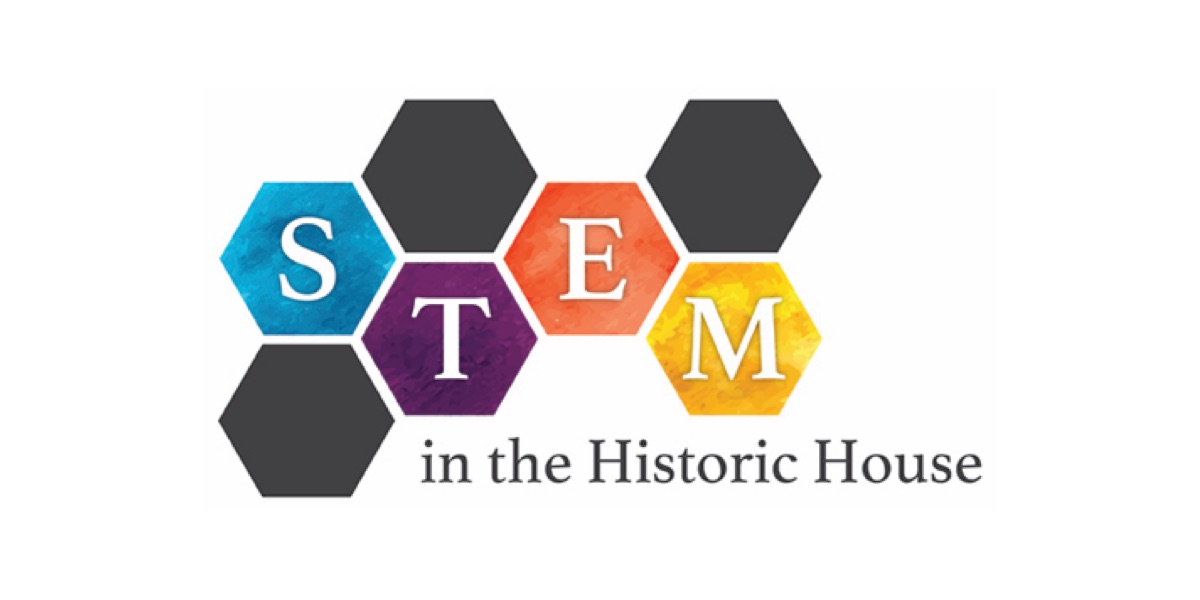
The disciplines of Science, Technology, Engineering and Mathematics (STEM) are essential to further how we understand, preserve and interpret historic houses and the collections contained within. Conservators, curators, fine art movers, artists and a variety of museum staff use systems and methods developed through the STEM disciplines to support and enhance their work.
Through the information from this past exhibition, you will discover how STEM is involved in examining historic building plans, producing historic wallpaper, conducing microscopic paint analysis and painting restoration, aiding in frame construction and crate manufacturing, facilitating X-ray fluorescence and developing 3-D scanning, casting and printing methods.
Never before have museum professionals had access to such a wide array of technological innovations to assist with historic preservation, conservation and interpretation! We encourage you to think about how STEM disciplines strengthen museum experiences. Archaeological remains are often only uncovered thanks to STEM technologies. Virtual reality experiences and mobile apps are increasingly being used by museums to allow visitors to more fully engage with their surroundings.
The combination of traditional historical research methods and STEM developments is the clear path towards more deeply understanding our past.
3-D SCANNING, CASTING AND PRINTING
3-D scanning, casting and printing allow museums to reproduce objects so they can be handled, studied and better understood without damaging the originals. The display of the 18th-century brick for George Mason’s Gunston Hall and a spoon mold in the Dumbarton House collection demonstrate the process of creating 3-D models. These models allow the viewer to see and feel details on the object such as the thumbprints of an enslaved workers on the brick. The first step in creating a 3-D model is to scan an object using a device that can capture various angles. A digital image is then created using 3-D design software. In the case of the spoon mold, this process allowed us to print a model of the spoon rather than having to handle the object itself. Metal objects such as a spoon cannot be scanned because the metal will reflex the light causing malformations in the print. Usually a cast of these
metal objects is made first and that is scanned to create the model. Once the scan is made the model is printed using a 3-D printer. Other times, often when working in-situ, casts are made due to limited or immediate access and scanned at a later point if necessary. The latex mold of the floret in the lower passage is such as example. During printing, the object is recreated with thousands of tiny layers of plastic that stick together. The final model can be painted to match the color of the original object if desired.

PAINTING CONSERVATION
Conserving a painting is both an art and a science. Conservators need to understand the different chemical make-ups of the paint pigments used by artists. Advances in technology such as X-ray and ultraviolet (UV) scans aid conservators in distinguishing the different layers of paint within an artwork.
To conserve our painting of Joseph Burton (ancestor and namesake of former Dumbarton House owner, Joseph Nourse), the conservator first cleaned any dirt on the surface with a solution of sodium citrate and removed the exterior varnish. Solutions of acetone are also used to clean or remove layers of paint. The various ratios of the chemicals need to be precise because any imbalance could either damage the paint or fail to remove all the dirt. If there are any cracks or holes in the paint, the conservator will fill them with a fine putty and re-paint the area with pigments bound in a resin. The last step is to put a new varnish over the paint. Look at the photos of the Joseph Burton painting before, during and after restoration to see the results of these scientific processes. This painting is now hanging in the Breakfast Room fully conserved.

BLUEPRINTS, SURVEYS, AND DRAWINGS
Floor plans, blueprints and sketches capture the mathematics and engineering that goes into building and maintaining historic houses. When architects document the plans and blueprints of historic properties they include measurements of the site along with a scale so that the viewer can understand the size of the actual building.
Blueprints, which are named after the blue, light-sensitive sheets that allow the plans to be reproduced, also show the measurements of the interior spaces of historic homes and the individual features of each house. The dimensions and materials noted on the blueprint of the elevation of Dumbarton House’s front portico show the engineering involved in building the porch.
Many architects of historic properties took inspiration from plans illustrated in architectural books. For example, McAllister House, Colorado Springs, CO, designed by George Summers and built in 1873, is nearly identical to a design for an English-style cottage depicted in Andrew Jackson Drowning’s The Architecture of Country Houses first published in 1850.

CRATING
Crating is important for the safety and transportation of historic objects. The fabrication of crates can be a lengthy process because the planning involves both physics and mathematics. Bonsai Fine Art Services, who created and donated these creates for the exhibit, specializes in creating storage crates for collections items. While many crates are like these two, some crates are so strong that they are shock or bomb proof. Manufacturers use the measurements and weight of an object to create a custom crate that will adequately protect it during transit and storage. Using exterior and interior measurements, the crates are designed so that the object fits snugly without creating pressure points that could cause damage. Shapes are cut in foam to secure the object and absorb any vibrations that might occur during movement. To determine the amount of padding, manufacturers calculate the pressure that might occur if the crate is dropped during transport. Items such as the garden urns seen here are so large and heavy that the different parts of the urn are separated and individually secured. Notice the fabricated shelves that pull out allowing access to different parts of the urn without reaching into the crate.

WALLPAPER
Have you ever thought about how wooden frames are made? You might not realize just how much engineering, math and science goes into creating these objects. Historical and modern frame production uses precise measurements and chemical combinations to create decorative wooden frames. The first step in the process is drawing and cutting a design in a raw piece of wood. The frame is then covered in gesso, a white paint mixture that consists of a binder mixed with chalk and gypsum. To make the frame gold craftsmen apply gold leaf to a layer of clay in a processes called gilding. The layer of clay is called bole and can be red, blue, or yellow. The gold leaf can be applied using water or oil or a combination of both of these methods. The final step is to burnish or polish the frame to give the gold a bright sheen when and where it is desired. This piece of frame that show each step in the frame making process was kindly made and donated by Eric Michael Tollefson, an expert frame maker from Harpswell, ME.

PAINT ANALYSIS
Paint analysis helps us understand the history of a building or object by looking at the layers of paint on the surface. Here at Dumbarton House, paint analysis is used extensively on interior and exterior doors, wall, window frames, etc. Historic house museums often use paint analysis to determine what wallcovering or paint was present during the period they want to interpret. The process starts by taking small samples of paint and from a surface then casting them in polyester resin cubes for examination. After the samples are prepared, they are examined under a microscope and photographed using ultraviolet light. When viewed under ultraviolet light, there is a greater distinction between the layers of paint because the different materials in each paint layer have a distinct fluorescence color. When the sample is viewed in visible light, we can tell the difference between layers but it is generally muddled with dirt and other materials that changed the color over time.

This exhibition was created by James Stewart, Dumbarton House Curatorial Intern in 2017-2018






